Faculty and Staff
Department Chair
 Sanjai K. Pathak
Sanjai K. Pathak
Chemical Biology, Bioorganic & medicinal chemistry
Remsen, Room 252A
Phone: 718-997-4120
sanjai.kumar@qc.cuny.edu
Personal Home Page
Design, synthesis and evaluation of tight-binding inhibitors of clinically important enzyme targets using a combination of rational and combinatorial approaches, enzyme kinetics and molecular modeling.
Faculty
 Yu Chen
Yu Chen
Organic Chemistry
Remsen, Room 206F
Phone: 718-997-4132
yu.chen1@qc.cuny.edu
Personal Home Page
Dr. Chen’s research interest includes the topics of late-transition-metal catalysis, asymmetric synthesis and catalysis, and heterocyclic chemistry. The late-transition-metal catalysis topic plays a significant role in Chen research group. His group is particularly interested in group 9 to 11 transition metals, especially Rh, Pd, Pt and Au. Developing new efficient chemical transformations using these late-transition-metal catalysts is currently one of the group’s major objectives. The late-transition-metal catalyzed asymmetric synthesis is another important research topic in Chen group. The group focuses on designing and preparing new ligands with axial chirality or facial chirality for efficient and highly stereoselective chemical reactions catalyzed by late-transition-metals. The synthetic methodologies developed in Chen group will be employed as the key steps in the synthesis of biologically interesting and pharmaceutically important molecules.
 Junyong Choi
Junyong Choi
Chemical Biology
Science Bldg, Room B304
Phone: 718-997-3279
junyong.choi@qc.cuny.edu
Personal Home Page
My research areas: Organic and Medicinal Chemistry, Computer-aided Drug Design, Chemical Biology. The main objective in the Choi Laboratory is to discover specific, target-directed therapeutics for human diseases. The Choi lab integrates organic synthesis, computer-aided drug design, and chemical biology to discover bioactive chemical probes and therapeutic candidates. We design and synthesize small molecules that modulate biological targets in cells and animal models of human diseases. We are particularly interested in discovery of small molecules possessing novel mechanisms of action in order to understand specific functions of biological targets in human diseases. The discovery and techniques established in the Choi lab will advance the chemical science in biomedical research and facilitate understanding in human diseases for the development of therapeutics.
 Cherice M. Evans
Cherice M. Evans
Physical Chemistry
Remsen, Room 206G
Phone: 718-997-4216
cherice.evans@qc.cuny.edu
Personal Home Page
Research interests — experimental physical chemistry: molecular and atomic spectroscopy, field ionization and photoabsorption of molecular Rydberg states in dense gases and simple fluids, molecular Rydberg-Rydberg transitions, electric field effects on molecular Rydberg states, the effects of rare-gas clusters on molecular Rydberg states, oscillatory absorption and fluorescence in gas-phase and liquid-phase chemical systems, Turing pattern formation in liquid-phase chemical reactions
 Eleonora Gianti
Eleonora Gianti
Biohemistry, Computational Chemistry
Remsen 120F, Lab: Remsen 214
Phone: 718-997-
Eleonora.Gianti@qc.cuny.edu
Personal Home Page
My research has focused on computational chemistry, computer-aided drug discovery (CADD) and protein modeling. My ultimate goal is to address fundamental questions in cell biology, biochemistry and biophysics, and use this information to aid the design of novel drug leads acting on biomedical targets.
 William H. Hersh
William H. Hersh
Organic/Organometallic Chemistry
Remsen, Room 109B
Phone: 718-997-4144
william.hersh@qc.cuny.edu
Personal Home Page
Uses of novel phosphorus chemistry in organometallic catalysis, antisense oligonucleotide synthesis, and enantioselective catalysis.
 Seogjoo J. Jang
Seogjoo J. Jang
Theoretical and Computational Chemistry -Physical Chemistry, Photonics, and Nanoscience
Remsen, Room 119C
Phone: 718-997-4110
seogjoo.jang@qc.cuny.edu
Personal Home Page
Jang’s expertise is in the area of condensed phase quantum dynamical molecular processes. He has worked on path integral simulation, theories of energy/electron transfer, and development of new quantum master equations. His main focus at present is combining these approaches for reliable theoretical description of energy and charge flow dynamics in photosynthetic pigment-protein complexes and in various conjugated organic molecules used for plastic solar cells.
 Jianbo Liu
Jianbo Liu
Physical & Analytical Chemistry, and Nanotechnology
Science Building, Room B312
Phone: 718-997-3271
Jianbo.Liu@qc.cuny.edu
Personal Home Page
Our research focuses on using mass spectrometry and ion-molecule reaction techniques to probe biologically relevant processes in a spectrum of systems ranging from isolated biomolecules and biomolecular ions, through micelles and aerosol droplets of biomolecules, to biomolecule solution. We are also interested in discovering and developing new analytical approaches. In addition, we have related interests in computational chemistry (e.g. quasi-classical direct dynamics trajectory simulations) and nano-materials.
 Michael V. Mirkin
Michael V. Mirkin
Electrochemistry, Physical and Analytical
Remsen, Room 120E
Phone: 718-997-4111
michael.mirkin@qc.cuny.edu
Personal Home Page
 Sanjai K. Pathak
Sanjai K. Pathak
Chemical Biology, Bioorganic & medicinal chemistry
Remsen, Room 252A
Phone: 718-997-4120
sanjai.kumar@qc.cuny.edu
Personal Home Page
Design, synthesis and evaluation of tight-binding inhibitors of clinically important enzyme targets using a combination of rational and combinatorial approaches, enzyme kinetics and molecular modeling.
 Susan A. Rotenberg
Susan A. Rotenberg
Biochemistry
Remsen, Room 117B
Phone: 718-997-4133
Susan.Rotenberg@qc.cuny.edu
Personal Home Page
Protein kinase C (PKC) is a Ca2+ and phospholipid-dependent protein kinase that is a vital component in various signaling pathways that govern proliferation, differentiation, and cell movement. In malignant cells, PKC promotes unregulated cellular growth and metastasis, as evidenced by 1) its role as the cellular receptor for tumor promoters, 2) its elevated levels of expression in certain tumors, and 3) disturbances in proliferation, migration, and reduction-oxidation processes of cells genetically engineered to overproduce PKC
 Uri Samuni
Uri Samuni
Biophysics, Biochemistry, Physical Chemistry, Bio-nanotechnology, Biophotonics
Remsen, Room 26A
Phone: 718-997-4223
Uri.Samuni@qc.cuny.edu
Personal Home Page
Prof. Uri Samuni has a doctorate in Physical Chemistry from the Hebrew University of Jerusalem, Israel, and postdoctoral training at the Keck Biomolecular Laser Research Center, Albert Einstein College of Medicine. Our research is interdisciplinary in nature involving physical chemistry, biophysics, photonics and nanophotonics. The main objective of our research is combining spectroscopy, specifically, resonance Raman and surface enhanced Raman spectroscopy (SERS), sol-gel encapsulation of proteins and nanoparticles. In sol-gel encapsulation, proteins are embedded in the inert and optically transparent sol-gel matrix and yet remain functionally active. This constitutes a unique platform for the study of protein conformational dynamics and the characterization of non-equilibrium conformations as they relate to protein function. Moreover, depending on the preparative conditions, this novel photonic material lends itself to a large range of applications such as biosensors and sol-gel based nanoparticles and their biomedical applications.
 Chen Wang
Chen Wang
Physical Chemistry
Remsen, Room 206G
Phone: 718-997-4100
chen.wang@qc.cuny.edu
Personal Home Page
My research focuses on novel applications of nanomaterials based on systematic investigations into fundamental science using state-of-the-art optical spectroscopies. In my lab, we are developing pump-probe techniques for time-resolved electronic and vibrational spectroscopy and microscopy, in order to understand and eventually utilize excitons energy in nanostructures and organic/inorganic hybrid nano composited materials. These include controlling non-radiative exciton decay processes for directly converting light into mechanical energy, developing photo-switchable sensors emitting in the near-IR window for biological imaging, and manipulating charge carrier dynamics in nanostructures to improve the efficiency of photocatalytic reactions.
 Gopal Subramaniam
Gopal Subramaniam
NMR, Chemistry Education
Remsen, Room 206C
Phone: 718-997-4123
As a facility director for NMR, we involve ourselves with small molecule as well as large molecule structural problems. We are also part of a working group in science education and in particular, I am involved in directing the chemistry education majors to become excellent high school teachers
 Sheila Sanders
Sheila Sanders
Chemistry Education
Remsen, Room 206D
Phone: 718-997-4185
sheila.sanders@qc.cuny.edu
Teach General Chemistry, Basic Chemistry, and Advanced Instrumentation Methods courses
 Iva Burdett
Iva Burdett
Chemistry Education
Remsen, Room 206A
Phone:
iva.burdett@qc.cuny.edu
Dr. Iva Burdett received her Ph.D. degree in Physical Chemistry from Brandeis University in Waltham, MA under the guidance of Professor Thomas Pochapsky. Her Ph.D. thesis research focused on structure-function relationships of intrinsically disordered proteins involved in neurodegeneration. Dr. Burdett has a special interest in interdisciplinary science, and while at Brandeis University she also received a sub-specialization in Quantitative Biology.
In her post-doc years at NYU School of Dentistry (Evans Lab) and Weill Cornell Medicine (Petsko Lab), Dr. Burdett continued research on proteins and protein oligomers that have unusual and unexpected shapes and functions. Her expertise is in a variety of instrumental techniques that are used in biomedical investigations and drug discovery. In particular, she is interested in studying intermolecular interactions that alter the original function of biomolecules.
Dr. Burdett is committed to equal-opportunity education, promotion of academic excellence, and teaching using contemporary pedagogy approaches. Before joining Queens College, she taught classes in Chemistry and Biochemistry at Mercy College, NYU School of Dentistry, Brandies University and Belgrade University. While at Mercy College, she was a HHMI Inclusive Excellence Scholar, dedicating several years to improving her teaching methods to be more approachable and inclusive.


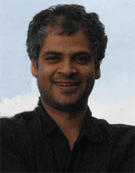 Sanjai K. Pathak
Sanjai K. Pathak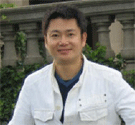 Yu Chen
Yu Chen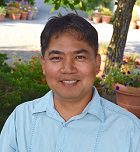 Junyong Choi
Junyong Choi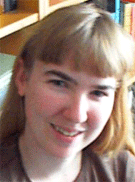 Cherice M. Evans
Cherice M. Evans Eleonora Gianti
Eleonora Gianti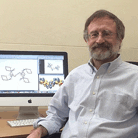 William H. Hersh
William H. Hersh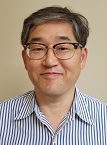 Seogjoo J. Jang
Seogjoo J. Jang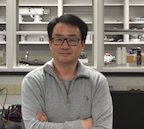 Jianbo Liu
Jianbo Liu Michael V. Mirkin
Michael V. Mirkin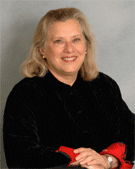 Susan A. Rotenberg
Susan A. Rotenberg Uri Samuni
Uri Samuni Chen Wang
Chen Wang Gopal Subramaniam
Gopal Subramaniam Sheila Sanders
Sheila Sanders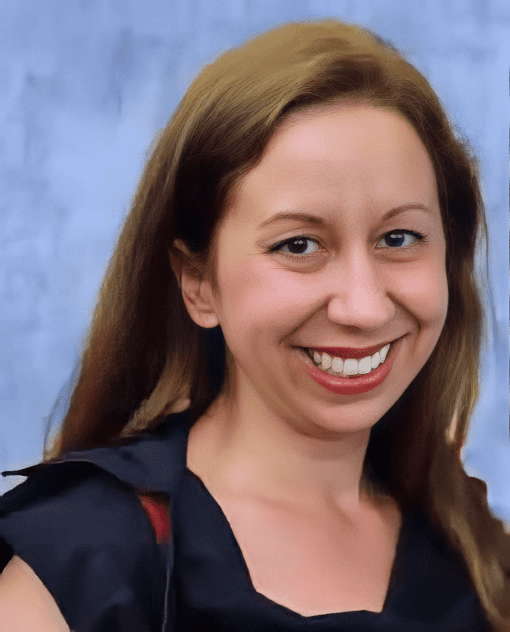 Iva Burdett
Iva Burdett